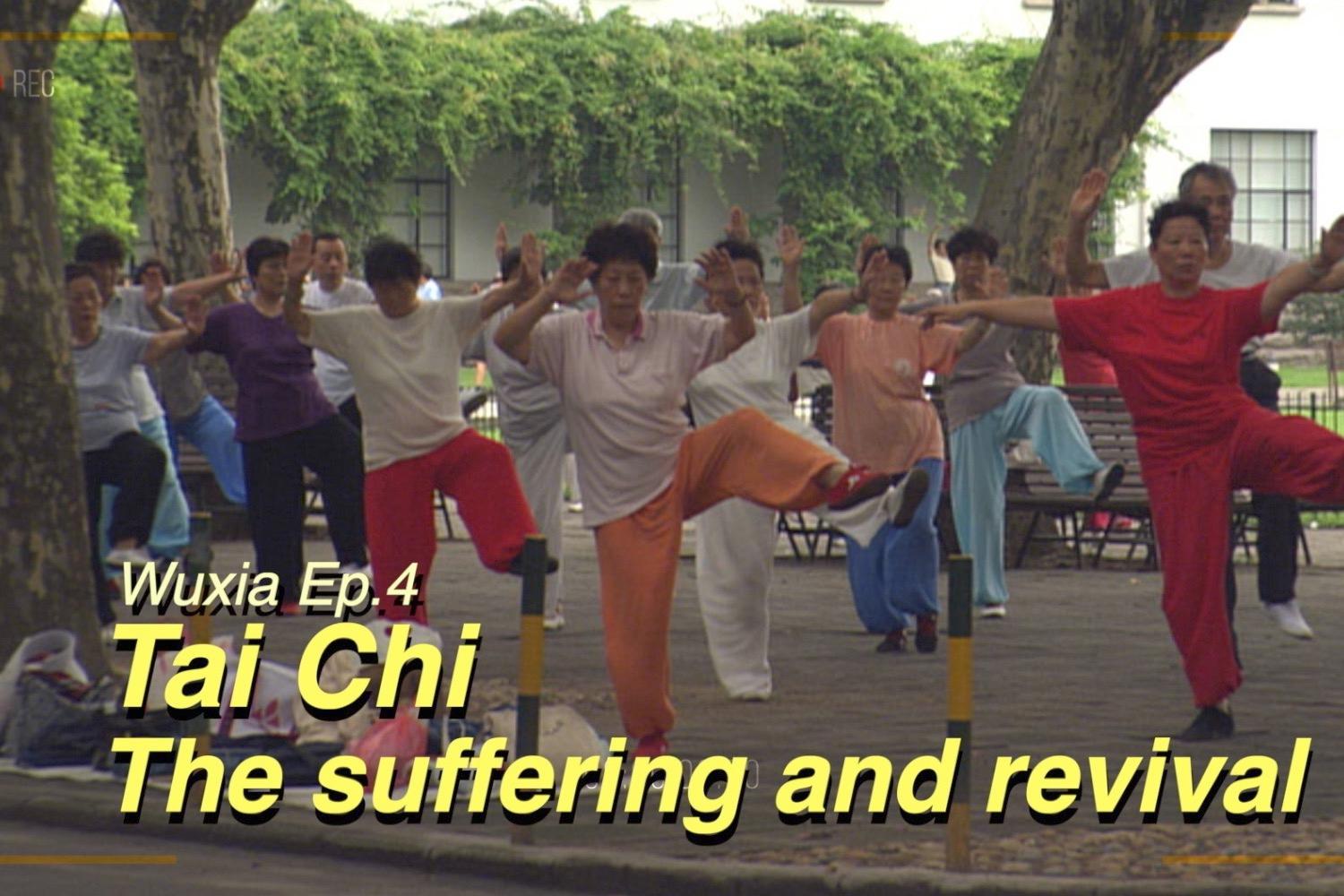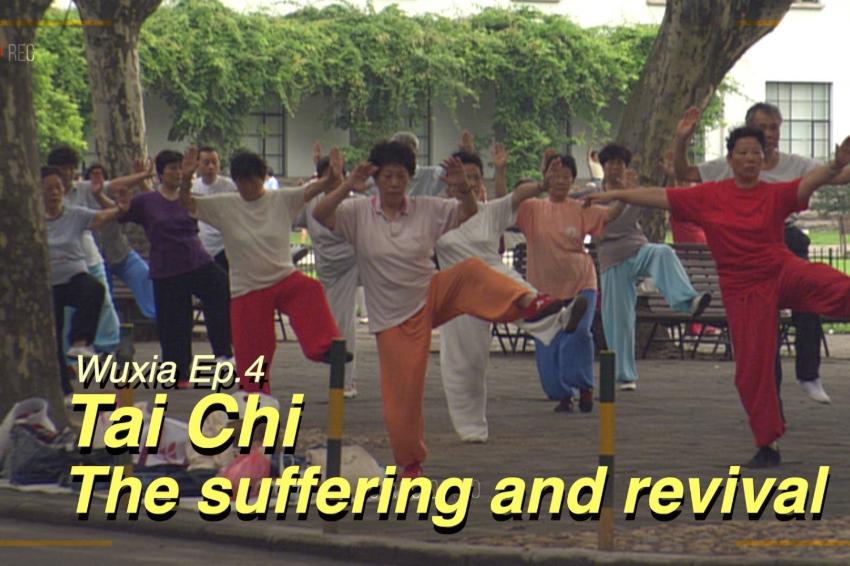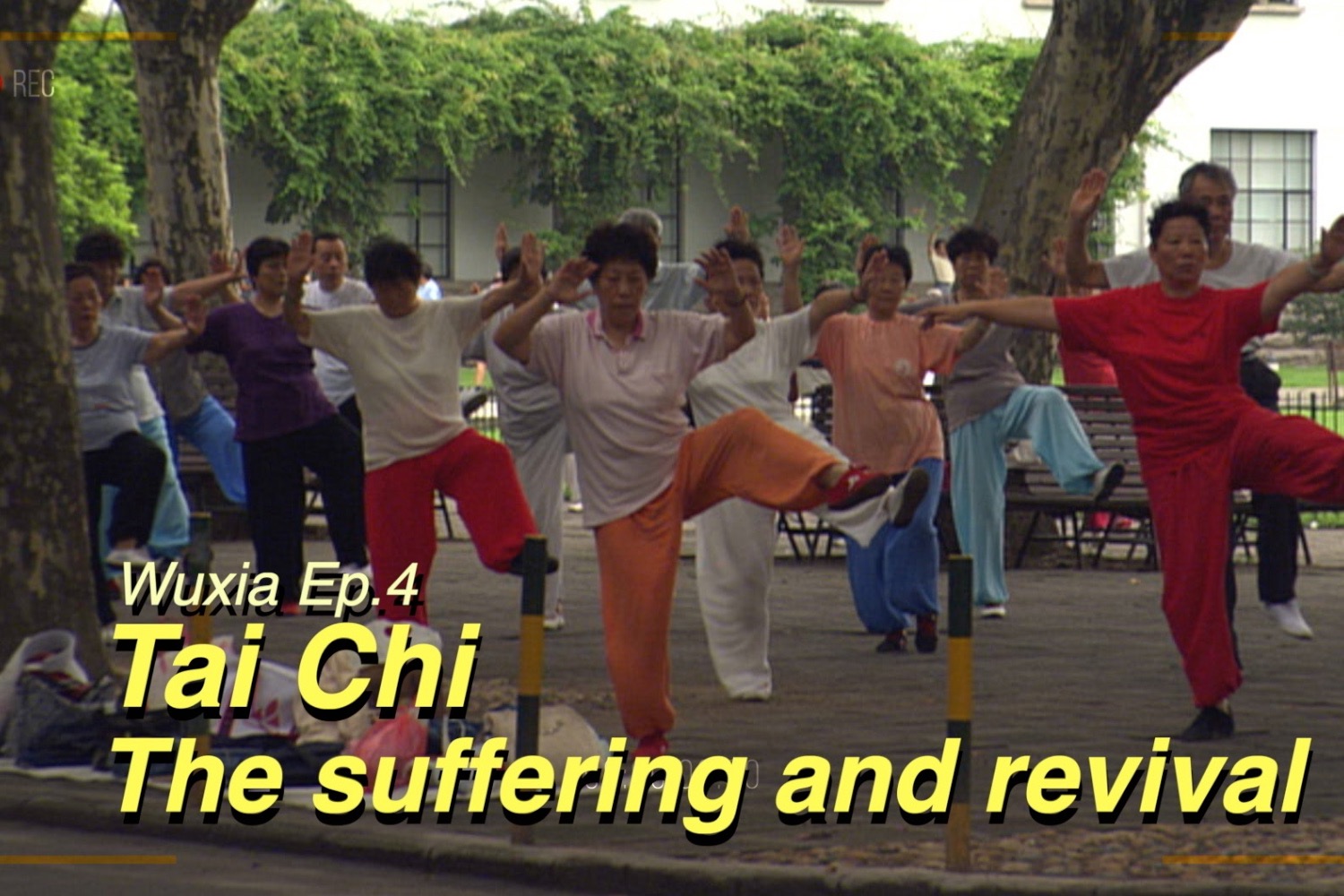2003년 다큐멘터리
생활 속의 무술(武術)
무협(武俠) 4화
[태극권(太極拳)의 수난과 대중화]
- 홍위병(紅衛兵) 사진
그런데 1960년대 문화대혁명(文化大革命)으로 태극권(太極拳)은 위기를 맞는다.
오래된 전통은 모두 구악으로 치부돼 혁명 의 대상이 됐다.
- 진조비(陈照丕) 사진과 능
진식태극권(太極拳)의 10대 전수인 진조비(陈照丕)는 당시 제자 양성에 전념하고 있었다.
- 진정뢰 (陳正雷) 인터뷰
(비바람이 그칠 날이 없었다. 전국이 다 마찬가지였다.
태극권(太極拳) 사부들에 모자를 씌워 봉건적인 미신을 전파한 죄인라고 적힌 그런 모자를 씌웠다.
종파를 결성했다는 이유는 수난을 당했다.
진조비(陈照丕) 선생님도 비난을 받았다.
여러 차례 회의장에 끌려가 얻어맞고 비난을 당했다.
사람들에게 얻어맞았다...당시 태극권(太極拳)을 사람들에게 가르칠 수 없었다.)
- 진정뢰 (陳正雷) 청년시절 사진
당시 10대 청년이던 진정뢰 (陳正雷)는 다른 제자들과 함께 비밀리에 태극권(太極拳)을 전수 받았다.
- 진정뢰 (陳正雷) 인터뷰
(우리는 밤에 담을 넘고 선생님집에 갔습니다. 태극권(太極拳)을 배우기 위해서죠.
그리고 우리 진가구(陳家溝)는 황하(黃河)의 북쪽에 있습니다. 남쪽에는 드넓은 황하(黃河) 평원이 있습니다.
우리는 황하(黃河) 평원에서 연습을 하기도 했습니다.)
- 적막한 진가구(陳家溝) 이미지
중국 전통문화의 수난기였다.
스승과 제자들은 숨죽인채 세월을 보내야 했다.
그러기를 몇 해... 때가 왔다.
- 천안문 광장, 진정뢰(陳正雷) 사진
1969년 태극권(太極拳)은 전민건신운동(全民建身運動)에 따라 복권된다.
하지만 태극권(太極拳)이 중국 전역에 급속히 보급된 것은 1980년대 들어서였다.
- 등소평(鄧小平 덩샤오핑) 사진 등
중국 경제의 개혁개방 노선을 택한 등소평(鄧小平).
그는 1978년 베이징을 방문한 중일 우호 협회(中日友好協会) 일본측 의원들이 태극권(太極拳)에 관심이 많다는 것을 알게 된다.
- 진정뢰 (陳正雷) 인터뷰
(등소평(鄧小平)이 기뻐서 일어나면서 ‘태극권(太極拳) 좋지’ 라고 말하자
야마우라가 ‘태극권(太極拳) 좋다’ 라는 글자를 써달라고 하자
결국 등소평(鄧小平)의 말이 ‘太極拳好’ 라는 글로 남게 된 것이다.)
- 태극권(太極拳) 동작하는 노인네들
그후 태극권(太極拳)은 인민들의 건강증진을 위한 수단으로 급속히 보급된다.
상하이에 살고 있는 장평(張平)씨 역시 건강을 위해 오랫동안 태극권(太極拳)을 수련해왔다.
- 장평(張平) 인터뷰
(저는 온몸에 크고작은 병 19가지가 있습니다.
상하이의 유명한 의사가 그러는데 일을 계속 하면 살기를 포기해야 한다고 했습니다.
제 건강이 나빠서 양생을 위해 무술을 배웠습니다.)
- 루쉰공원(鲁迅公园) 태극권(太極拳) 물결
상하이의 아침.
태극권(太極拳)은 건강을 위한 운동으로 자리잡았다.
체력단련법인 동시에 정신 수양법이었고, 또 생활 철학이기도 했던 태극권(太極拳).
하지만 지금 중국은 그 모든 것을 받아들일 여유는 없어 보인다.
2003 documentary
Martial Arts in Life
Chinese Hero: Wuxia Ep.4
[The suffering and revival of Tai Chi]
- Photo of the Red Guard
However, with the Cultural Revolution of the 1960s, Tai Chi faces a crisis.
All old traditions were dismissed as old evil and became the subject of revolution.
- Photo and tomb of Chen Zhaopi
Chen Zhaopi (陈照丕), the 10th instructor of Chen-style Tai Chi,
was concentrating on nurturing disciples at the time.
- Interview with Chen Zhenglei
(The rain and wind never stopped. It was the same all over the country.
They put hats on the teachers of Tai Chi and put them on such hats
that they said they were guilty of spreading feudal superstitions.
The reason for forming a sect was suffering.
Teacher Chen Zhaopi was also criticized.
He was dragged into the conference hall several times, beaten and criticized.
I was beaten by people... At that time, I couldn't teach people Tai Chi.)
- Chen Zhenglei youth photo
At that time, Chen Zhenglei (陳正雷), a young man in his teens,
secretly learned Tai Chi along with other students.
- Interview with Chen Zhenglei
(We crossed the wall at night and went to the teacher's house to learn Tai Chi.
And our Chenjiagou is located in the north of the Yellow River (黃河).
To the south lies the vast Yellow River Plain.
We also practiced on the Yellow River Plain.)
- An image of a quiet house
It was a difficult period of traditional Chinese culture.
The master and his disciples had to pass the time with their breath.
It's been a few years... the time has come.
- Photo of Chen Zhenglei
In 1969, Tai Chi was reinstated in accordance
with the National Restoration Movement.
However, it was only in the 1980s that Tai Chi
was rapidly spread throughout China.
- Deng Xiaoping's photo
Deng Xiaoping (鄧小平) took the path of reform
and opening up of the Chinese economy.
He learns that Japanese members of
the China-Japan friendship association
who visited Beijng in 1978, are very interested in Tai Chi.
- Interview with Chen Zhenglei
(When Deng Xiaoping was happy, he got up and said, “I love Tai Chi.”
When Yamaura asks you to write the words “I like Tai Chi”
In the end, the words of Deng Xiaoping were left as the words(太極拳好).
- Elderly people who practice Tai Chi
After that, Tai Chi was rapidly spread as
a means to promote people's health.
Zhang Ping, who lives in Shanghai,
has also practiced Tai Chi for a long time to stay healthy.
- Interview with Zhang Ping
(I have 19 large and small ailments all over my body.
A famous doctor in Shanghai said that if you keep working,
you have to give up your life.
My health was bad, so I learned martial arts to make a living.)
- Tai Chi wave at Lu Xun Park
Shanghai morning.
Tai Chi has established itself as an exercise for health.
Tai Chi was both a physical training method and a mental training method,
and it was also a life philosophy.
But now, China doesn't seem to be able to afford it all.







